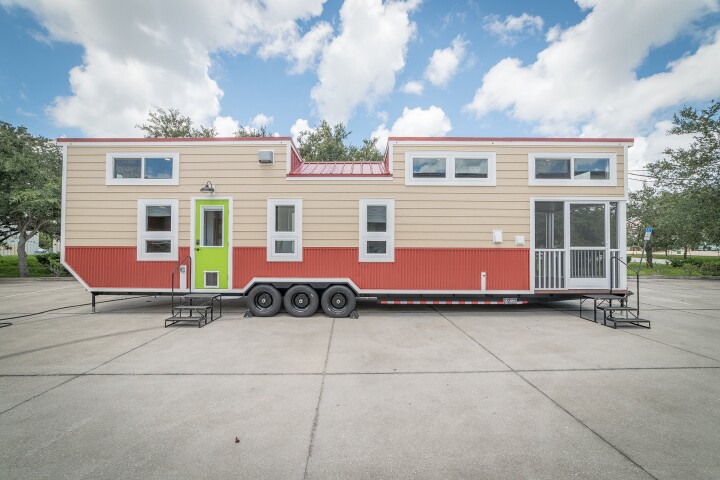Wearables might be handy in helping some of us lose a few pounds, but for people with significant health or medical problems they can be much more important. Like the Relúmĭno Glasses from Samsung, a smart visual aid that's going to be on show at CES 2018 in Las Vegas next week.
The glasses build on the Relúmĭno app that Samsung demoed at Mobile World Congress in February. Then, Samsung only had an app that required a phone and a Gear VR headset; now, the Relúmĭno concept has hardware all its own for a more comfortable and streamlined appearance, though the user still needs to provide the phone.
The inspiration behind Relúmĭno comes from the fact that 86 percent of people with visual impairments – some 217 million worldwide – aren't completely blind, and the majority of them list television as their favorite form of entertainment. Samsung engineers set out to provide something that could use the power of the modern-day smartphone to create a lightweight, simple to use, and (perhaps most important of all) inexpensive visual aid.
There are four modes to the Relúmĭno app and glasses, each using image processing software to enhance vision. Regular mode helps to better define shapes by making outlines more visually prominent, reducing blurriness, while Color Invert mode is designed for reading text, inverting black-on-white text and enhancing contrast.
Partial vision mode is designed for those who have central or peripheral vision loss, filling in the blind spots in a user's vision with image remapping. So, for example, those who experience tunnel vision get to see more of the world squeezed into that tunnel.
Finally, Display Color Filter mode works a lot like sunglasses, reducing the glare of certain colors and improving vision along the way. The Gear VR app was able to switch between modes based on head movements (looking down to read a book, for instance), but it's not clear yet whether the new glasses have the same feature.

What the new device will certainly do is make Relúmĭno easier to use outside – it's probably not the best idea to walk around with a Gear VR strapped to your head, but these new glasses are the same shape and size as regular specs. Samsung says the new hardware helps people use Relúmĭno "more comfortably and discreetly" than before.
As hardware shrinks and software gets smarter, this isn't the only visual aid we're seeing appear on the market, though without the might of a company like Samsung behind the initiative it's hard to get anything through to consumers. The Relúmĭno Glasses look to have enough to get there at some point.
Fresh out of Samsung's Creative Lab though, the glasses are still very much at the prototype stage, so we don't know yet when they will be available or how much they will cost. No doubt plenty of demos will be given at the Consumer Electronics Show over the next week or so. In the meantime, check out Samsung's Relúmĭno video below.
Source: Samsung





